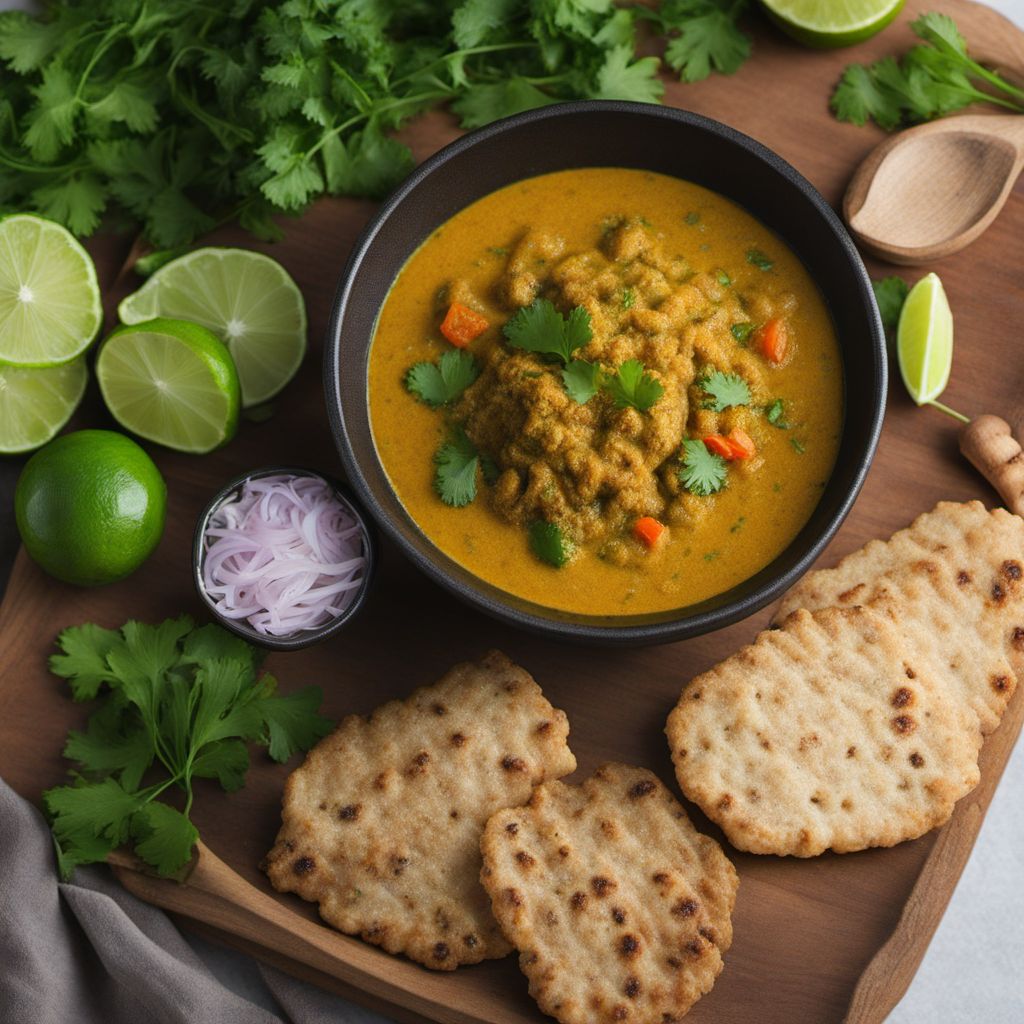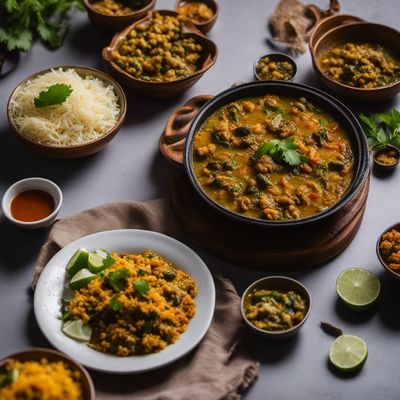
Recipe
Bengali-style Makaruni with Coconut Curry
Coconutty Delight: Bengali Makaruni with a Twist
4.7 out of 5
Indulge in the flavors of Bengali cuisine with this delightful twist on the traditional Croatian dish, Makaruni s škorupon. This Bengali-style Makaruni with Coconut Curry combines the rich and creamy flavors of coconut with the comforting texture of homemade pasta, creating a dish that is sure to satisfy your taste buds.
Metadata
Preparation time
20 minutes
Cooking time
15 minutes
Total time
35 minutes
Yields
4 servings
Preparation difficulty
Easy
Suitable for
Vegetarian, Vegan (if vegetable broth is used), Dairy-free, Nut-free, Gluten-free (if using gluten-free pasta)
Allergens
N/A
Not suitable for
Paleo, Keto, Low-carb, High-protein, Atkins
Ingredients
In this Bengali adaptation, the traditional Croatian Makaruni is transformed into a flavorful dish by incorporating Bengali spices and flavors. The original dish typically features a tomato-based sauce, while the Bengali version replaces it with a creamy coconut curry. Additionally, the use of Bengali spices, such as turmeric, cumin, and coriander, adds a distinct flavor profile to the dish. We alse have the original recipe for Makaruni s škorupon, so you can check it out.
-
250g (8.8 oz) Makaruni pasta 250g (8.8 oz) Makaruni pasta
-
2 tablespoons vegetable oil 2 tablespoons vegetable oil
-
1 onion, finely chopped 1 onion, finely chopped
-
2 cloves of garlic, minced 2 cloves of garlic, minced
-
1 teaspoon turmeric powder 1 teaspoon turmeric powder
-
1 teaspoon cumin powder 1 teaspoon cumin powder
-
1 teaspoon coriander powder 1 teaspoon coriander powder
-
1 cup coconut milk 1 cup coconut milk
-
1 cup vegetable broth 1 cup vegetable broth
-
Salt to taste Salt to taste
-
Fresh cilantro, for garnish Fresh cilantro, for garnish
-
Lime wedges, for serving Lime wedges, for serving
Nutrition
- Calories (kcal / KJ): 380 kcal / 1590 KJ
- Fat (total, saturated): 20g, 15g
- Carbohydrates (total, sugars): 45g, 3g
- Protein: 6g
- Fiber: 3g
- Salt: 1g
Preparation
-
1.Cook the Makaruni pasta according to package instructions until al dente. Drain and set aside.
-
2.In a large pan, heat the vegetable oil over medium heat. Add the chopped onion and minced garlic, and sauté until golden brown.
-
3.Add the turmeric powder, cumin powder, and coriander powder to the pan. Stir well to coat the onions and garlic with the spices.
-
4.Pour in the coconut milk and vegetable broth. Stir to combine all the ingredients.
-
5.Bring the mixture to a simmer and let it cook for 5 minutes, allowing the flavors to meld together.
-
6.Add the cooked Makaruni pasta to the pan and gently toss it in the coconut curry until well coated. Cook for an additional 2-3 minutes to heat the pasta through.
-
7.Season with salt to taste.
-
8.Serve the Bengali-style Makaruni with Coconut Curry hot, garnished with fresh cilantro and lime wedges.
Treat your ingredients with care...
- Makaruni pasta — Be careful not to overcook the pasta, as it should be al dente to maintain its texture in the curry.
- Coconut milk — Shake the can of coconut milk well before using to ensure the cream and liquid are well combined.
- Turmeric powder — Turmeric has a strong color, so be cautious while handling it to avoid staining your clothes or kitchen surfaces.
Tips & Tricks
- For a spicier version, add a pinch of red chili powder or a finely chopped green chili to the curry.
- If you prefer a thicker curry, simmer it for a few extra minutes to reduce the liquid.
- Feel free to add your choice of vegetables, such as peas or bell peppers, to the curry for added texture and flavor.
- To make the dish more indulgent, you can stir in a tablespoon of ghee (clarified butter) at the end for a rich and buttery taste.
- Leftovers can be refrigerated and reheated the next day. The flavors tend to develop and intensify, making it even more delicious.
Serving advice
Serve the Bengali-style Makaruni with Coconut Curry as a main course, accompanied by steamed rice or naan bread. It pairs well with a side of cucumber raita or a fresh green salad.
Presentation advice
Garnish the dish with a sprinkle of fresh cilantro and serve it in a shallow bowl to showcase the vibrant colors of the curry and pasta. Place a lime wedge on the side for squeezing over the dish, adding a pop of citrus flavor.
More recipes...
For Makaruni s škorupon
For Croatian cuisine » Browse all
More Croatian cuisine dishes » Browse all

Prijesnac
Cheese Pita
Prijesnac is a traditional Croatian dish that is similar to a quiche or frittata. It is made with eggs, cheese, and sometimes spinach or other...

Ogulinska masnica
Ogulin Cheese Pie
Ogulinska masnica is a traditional Croatian dish that is made with a flaky pastry dough and a savory filling. It is a popular dish in the region...

Kučanski koščičjak
Kučani Bone Pie
Kučanski koščičjak is a traditional dish from the Balkans. It is a savory pie made with lamb, potatoes, and phyllo dough.
More Bengali cuisine dishes » Browse all

Shukto
Shukto is a traditional Bengali dish that is made with a variety of vegetables and spices. The dish is typically served as a side dish and is a...

Murgi talkari
Chicken curry
Murgi talkari is a traditional Indian chicken curry that is rich in flavor and spices. It is a popular dish in many parts of India and is often...

Macher jhol
Macher jhol is a traditional Bengali fish curry that is popular in Bangladesh and West Bengal, India. It is a spicy and flavorful dish that is...








